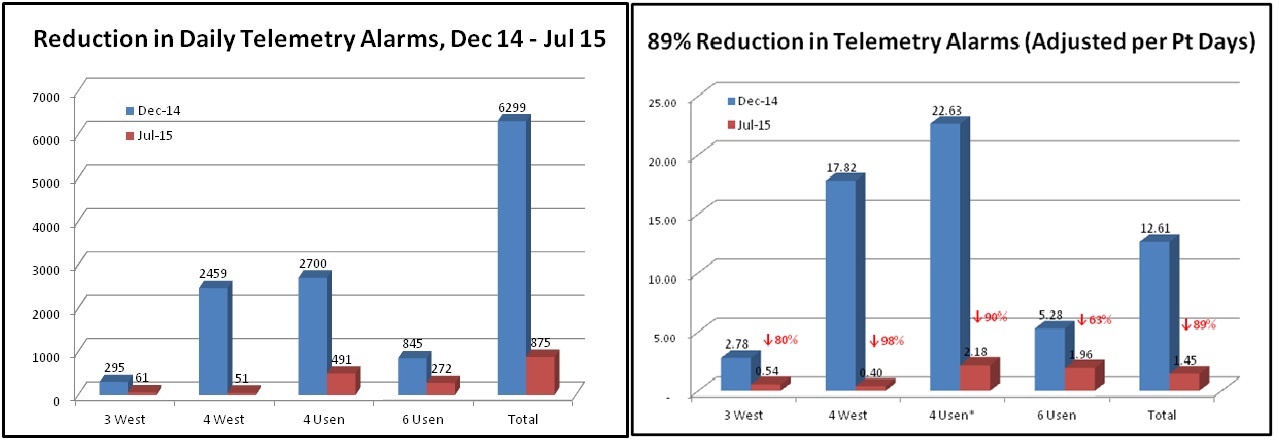Background: Alarm fatigue is a serious patient safety issue and represents a 2015 National Patient Safety Goal. False alarms can mask true alarms, and may contribute to suboptimal patient care practices. Cardiac telemetry monitoring in particular has been a focus in the Choosing Wisely campaign and at our institution.
Purpose: A comprehensive, multidisciplinary approach was developed to reduce excessive telemetry alarms on med-surg units. Our goal was to demonstrate a reduction in telemetry alarms by 50%.
Description: Baseline telemetry alarm data was collected in December 2014. Nursing and physician collaboration was essential in the adoption of myriad interventions aimed at reducing telemetry alarms. Our interventions included the following:
- Education of staff regarding alarm fatigue and management of clinical alarms
- Change in heart rate alert thresholds from 50/120 to 45/130 beats per minute
- Augmentation in criticality of alarms where appropriate
- Changing of telemetry leads three times a week
- Incorporation of AHA guidelines into the provider telemetry electronic order
- Daily discussion between physicians and nurses during multidisciplinary rounds regarding telemetry utilization
Results: A daily average of 6,299 telemetry alarms was noted on medical and surgical units in December 2014. Alarms data was collected in July 2015 following the deployment of our interventions. Our primary finding is that the daily average number of telemetry alarms decreased dramatically from 6,299 to 875 (Figure 1). When adjusted for patient days, we report an 89% decrease in audible telemetry alerts (12.61 to 1.45 alarms/patient day) (Figure 2). This was consistent across all units.
Conclusions: Alarm fatigue is a serious problem, but a multidisciplinary approach has been successful so far in dramatically decreasing the number of telemetry alarms at our institution by 89%. Further data analysis will be conducted to determine whether these results remain sustained over time, and whether staff and patients perceive a quieter environment in the hospital.
